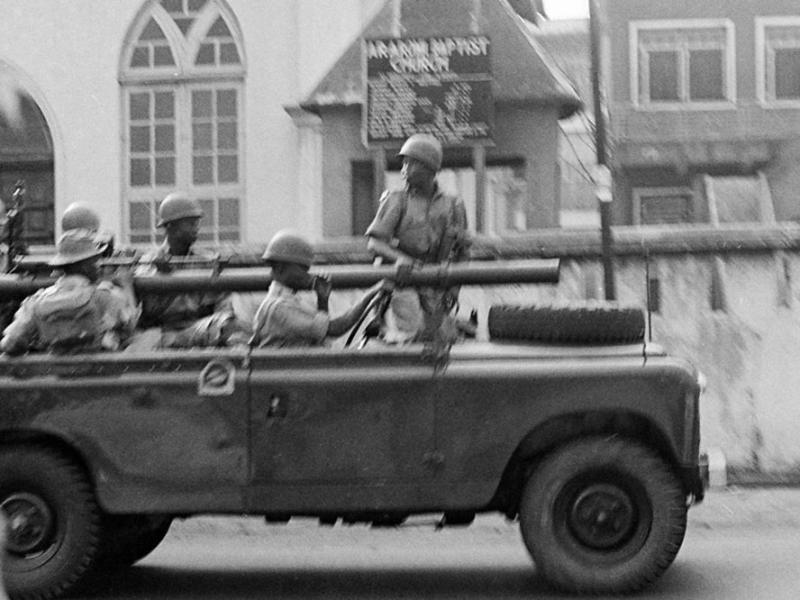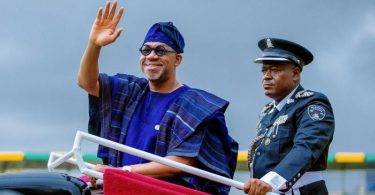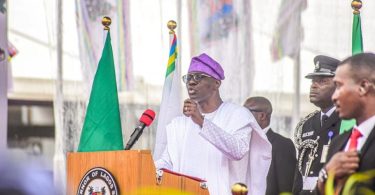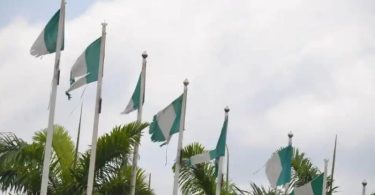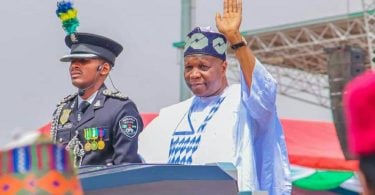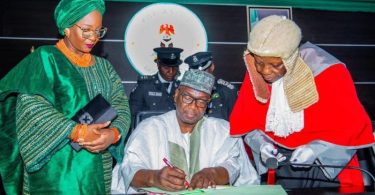Nigeria has seen five military coups since 1960. Nigeria was ruled by a military administration from 1966 to 1999, with a brief restoration to democracy in 1979 to 1983. The last coup was in 1993, and the Fourth Nigerian Republic, which restored multiparty democracy in 1999, has not attempted another.
According to Nigerian historian Max Siollun, military coups and tyranny become a persistent aspect of Nigerian politics. The wealth of natural resources has also been blamed for Nigeria’s military coups. Colonialism created an artificial state with multiple ethnic groupings, which led to regional conflicts and repeated coups. These diverse ethnic groupings were represented by regional parties, therefore “none of the parties could govern Nigeria on its own.” There was no centralised opposition to military control, thus a coup was just another faction.
Military rule ruined the economy. They abandoned their traditional agricultural economy and were increasingly dependent on oil exports, which led to an unstable economy. The Babangida era was marked by “gross inefficiency, waste, mismanagement, privatisation of public office and resources, and neglect of non-oil sectors.” Due to 1980s military economic strategy, 45% of foreign-exchange revenues went to debt service and growth was low. Poverty, crime, child abuse, sickness, institutional deterioration, and urban dispersion rose. These policies’ volatility and dissatisfaction contributed to a pattern of coups.
List of coups & coup attempts in Nigeria
January 1966 coup
Young military officers overthrew Nigeria’s government on 15 January 1966, ending the First Nigerian Republic. Officers who staged the coup were mostly Igbo Christian southerners led by Kaduna Nzeogwu. They assassinated Prime Minister Tafawa Balewa, Northern Region Premier Ahmadu Bello, Western Region Premier Ladoke Akintola, Finance Minister Festus Okotie-Eboh, and the four highest-ranking northern military officers. Coup leaders claimed to end corruption, end violence, and hold fresh elections. Major General Johnson Aguiyi Ironsi, himself an Igbo, imposed military discipline and became head of state. He suspended the constitution, disbanded all legislative parties, banned political parties, and installed an interim federal military government, without indicating when civilian authority would return.
July 1966 counter-coup
Ironsi’s dictatorship fell on 1 August 1966 after a countercoup on July 29. Yakubu Gowon became president. Ironsi and Lieutenant Colonel Francis Adekunle Fajuyi were killed. Muhammadu Buhari was one of the officers in the 1983 coup. Both the coup and the countercoup had a “ethnic tint” and fueled ethnic violence, leading to the Nigerian civil war. After the conflict ended in 1970, Gowon vowed to end military rule on 1 October 1976. In 1974, he delayed democratisation because Nigerians lacked “moderation and self-control”
July 1975 coup
On 29 July 1975, Gowon’s friend Colonel Joseph Nanven Garba stated on Radio Nigeria that he and other commanders had removed Gowon as head of state and commander-in-chief. Gowon was at an OAU meeting in Kampala during the bloodless coup. Brigadier Murtala Muhammed replaced him, and Brigadier Olusegun Obasanjo became vice president. General Hassan Katsina, a former Army Chief of Staff sacked by Gowon, was reportedly “the real coup author.” On 1 October, Muhammed, like Gowon, announced a restoration to civilian rule: after writing a new constitution and many institutional adjustments, elections would be held, permitting a power transfer.
February 1976 coup attempt
Muhammed was killed during a failed coup on 13 February 1976. Ibrahim Taiwo, the military governor of Kwara state, and his driver and aide were also killed. The coup was led by “young revolutionaries” who lacked civilian and military support. Division commanders and government authorities outside Lagos rapidly quashed the attempt. Obasanjo was installed as the new head of state. Lieutenant Colonel Bukar Suka Dimka reportedly led the coup to restore Gowon’s regime. In March, 32 persons were sentenced to death, including Dimka and the defence minister, Major General Illiya D. Bisalla.
December 1983 coup
On 31 December 1983, a coup terminated the Second Nigerian Republic. In his first military broadcast after the coup, Brigadier Sani Abacha declared President Shehu Shagari’s government “inept and corrupt.” Abacha, who became president a decade later, played a “major role” in the coup. During the Abuja operation to apprehend Shagari, one person was killed: Brigadier Ibrahim Bako. General Muhammed Buhari became president.
August 1985 coup
Major General Ibrahim Babangida, the army chief of staff, staged a palace coup on 27 August 1985 while Buhari was away from Lagos and his chief aide was on a pilgrimage to Saudi Arabia. Major General Joshua Dogonyaro announced the coup on the radio in the morning. Babangida later addressed the public, calling Buhari’s rule “rigid and uncompromising” and “inconsistency and incompetence.”
December 1985 alleged coup plot
Babangida’s government claimed to have prevented a coup attempt in December 1985 and to have apprehended individuals involved, among them Major General Mamman Vatsa. Vatsa was one of thirteen military officers who were given the death punishment for their roles in a plot to commit treason. Ten of the officers, including Vatsa, were put to death by firing squad in March of 1986.
April 1990 coup attempt
A group of military officers led by Major Gideon Orkar invaded Dodan Barracks on April 22nd, 1990, in an effort to topple the government of President Ibrahim Babangida. Senior military officers from other parts of the country declared their support for Babangida, and fighting ceased ten hours later. In July of 1990, 42 men were executed by firing squad for their roles in the failed coup.
August 1993 coup
Babangida resigned and appointed Ernest Shonekan interim president on August 26, 1993. General Sani Abacha overthrew Shonekan’s transitional government on 17 November 1993. This followed the annulment of presidential elections billed as the start of a Third Nigerian Republic. Abacha signed a decree in September 1994 that put his government above the courts, thereby giving him full power.
July 1995 alleged coup attempt
In July of 1995, Abacha’s regime handed down convictions against forty individuals on charges of organising a coup. Musa Yar’Adua and Olusegun Obasanjo, both former heads of state, were both among those who were put behind bars.
December 1997 alleged coup plot
Abacha’s regime declared in December 1997 that they had prevented a coup attempt led by his deputy, Lieutenant General Oladipo Diya, who had just survived an assassination attempt. Three further generals, five colonels, and three other high-ranking commanders were also detained. Many people thought the “coup” was only a pretext for a purge.
April 2004 alleged coup attempt
The democratically elected government of Olusegun Obasanjo said in April 2004 that it had arrested numerous military personnel in connection with a coup plot. It was believed that Abacha’s security chief, Hamza al-Mustapha, was involved.
